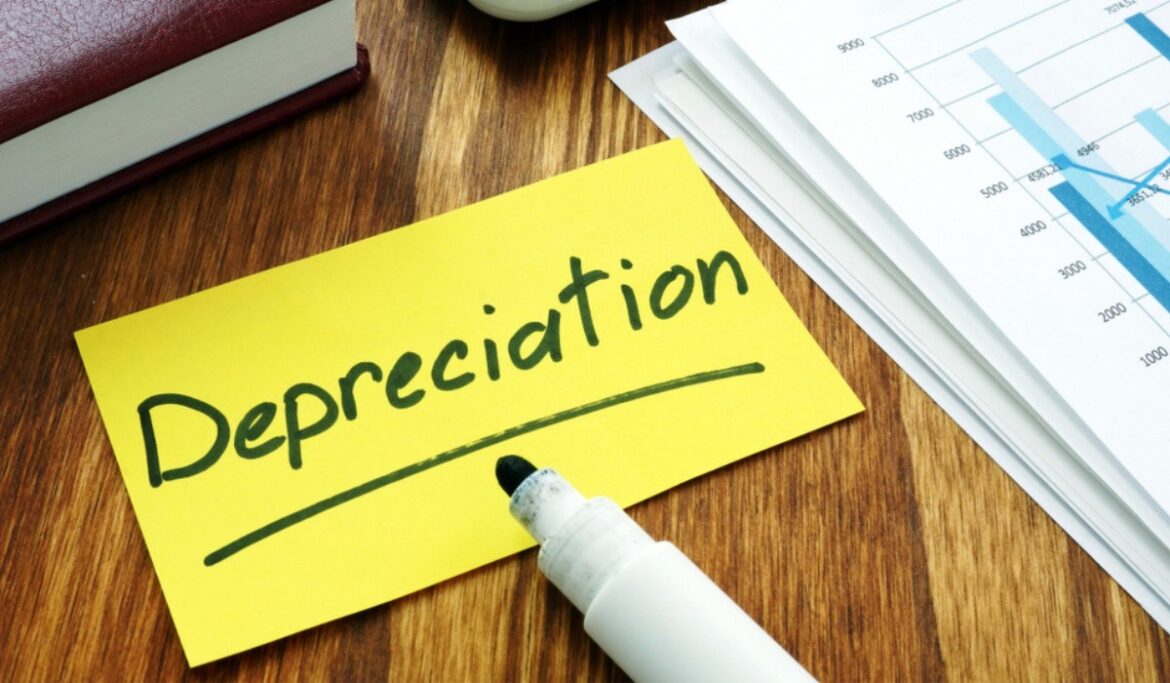The definition of accelerated depreciation
Depreciation is a commercial expense. A company must be aware of its costs to be profitable. Assets depreciate when their value decreases over time until it reaches zero. For example, office supplies, computer hardware, industrial equipment, and other items degrade over time. Real estate is one asset that keeps value over time.
An accelerated depreciation method causes an asset’s value to decline more quickly than it would under a conventional depreciation approach like the straight-line method. The initial years see more accelerated depreciation than the latter years. Therefore, taxes can be decreased by using accelerated depreciation.
The formula for the Depreciation Rate
Using the depreciation rate formula for the Straight Line Method is one way to calculate depreciation:
According to this approach, the depreciation charge will equal the machinery’s purchase price less salvage value. And then, you’ll divide the outcome of that computation by your whole life expectancy. The life span years divided by one will result in the depreciation %.
Depreciation Expense = (Cost of the Machinery minus Salvage Value) / Total Life Span.
The machinery’s value at the end of its useful life is its salvage value.
Figure 1
For instance, if the price of a delivery truck is $50,000 (Cost of the Machinery), $0 (Salvage Value), and ten years (Total Life Span), then ($50,000 – $0)/10 is the depreciation expense. Then ($50,000)/10 = $5,000. The Straight Line Method depreciation expense is $5,000 annually. (Cost of Machinery) x (Depreciation percentage) = $50,000 x .10 = $5,000 = (Depreciation Expense)
Calculation Techniques for Accelerated Depreciation
There are two depreciation methodologies to determine accelerated depreciation: the sum of the years’ digits (SYD) approach and the double-declining balance method.
Accelerated Depreciation Method: Double-Declining Balance Method
The double-declining balance depreciation technique, often known as the double depreciation method, causes higher depreciation in the early years of the machinery’s useful life than in the later years.
For instance, an automobile loses more excellent value the first few years after being purchased. Therefore, the depreciation factor for the double-declining balance technique is double that of the straight-line expense method. Thus, the depreciation percentage, which is equal to one divided by the total number of life span years, is first calculated to determine the double-declining balance depreciation.
Sum of the Years’ Digits Method
The projected life of an asset is used to calculate the depreciation rate using the method of the years’ digits. To utilize it, total up the digits for each year. For example, the calculation for an item having a four-year useful life would be 4+3+2+1 = 10. To get the percentage that should be depreciated yearly, split this sum into each digit. For the sake of the example, this would translate to 40% depreciation in the first year, 30% second, 20% third, and 10% in the fourth and final year.
FINAL INSIGHT
Some businesses avoid accelerated depreciation because it necessitates more depreciation calculations and record keeping (though fixed asset software can readily overcome this issue). Companies may also disregard it if they are not constantly generating taxable revenue, eliminating its primary benefit.
Finally, publicly traded corporations often avoid accelerated depreciation since it lowers their reported income. When investors see a lower registered income number, they tend to bid the price of a company’s shares downward.







